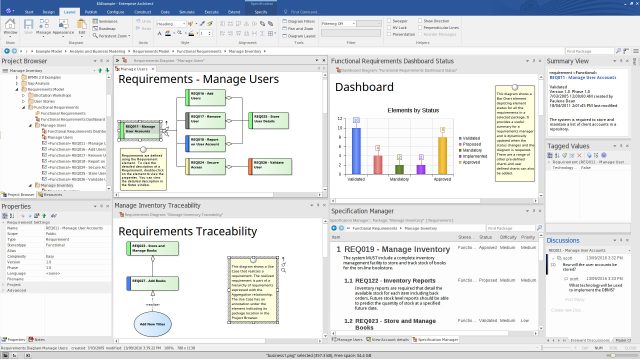Last Updated on February 26, 2024 by Nasir Hanif
As an enterprise architect, you have a lot of responsibilities. You must ensure that the business can achieve its goals, that the technology infrastructure can support the company’s needs, and that all systems are aligned with the overall strategy. It can be a lot of work, but it’s also very rewarding.
1. Defining the Overall Structure of an Organization’s IT Systems
The term enterprise architecture describes the overall structure of an organization’s IT systems. Enterprise architects work with business leaders to align IT strategy with business goals, and they design IT systems that support the organization’s goals.
Enterprise architects also develop plans for integrating new technologies into the existing IT infrastructure. To be effective, enterprise architects must have a deep understanding of both business and technology.
They must be able to translate complex technical concepts into business terms, and they must be able to identify opportunities for using technology to improve business processes.
As businesses become more reliant on technology, the role of the enterprise architect will become increasingly important.
2. Developing Long-Term Plans for Implementing New Technologies
When implementing new technologies, it is important to have a clear and concise plan. This plan includes a timeline for when the technology is introduced and a budget for how much it costs.
Furthermore, the plan should identify who will be responsible for managing the technology and providing training to employees. Without a well-developed plan, there is a risk that the technology will not be used effectively or may even be rejected by employees.
Therefore, it is essential to take the time to develop a comprehensive plan before introducing any new technology into the workplace.
3. Identifying and Resolving Potential Conflicts between Different System Components
Resolving potential conflicts between different system components is a crucial step in ensuring the overall success of any system. Identifying potential conflict areas makes it possible to develop solutions to mitigate or eliminate the issue.
Many different approaches can be taken when resolving conflicts. The most important thing is to ensure that all stakeholders are actively involved in the process. By working together, a lasting solution is found that will benefit everyone involved.
In some cases, it may even be necessary to completely redesign one or more system components to achieve a successful resolution. However, with careful planning and execution, it is often possible to avoid major disruptions and achieve an effective result.
4. Ensuring That All IT Systems Are Compatible With Each Other
One of the essential duties of any IT department is to ensure that all the systems within an organization are compatible. This can be a difficult task, as there are a multitude of different systems with their unique protocols and standards.
However, it is essential for the smooth operation of an organization. Incompatible systems can lead to data loss, decreased productivity, and other problems. IT professionals can keep everything running smoothly by developing a strong understanding of how different systems work and their compatibility requirements.
Additionally, by keeping up to date with the latest technological changes, they can ensure that new systems are compatible with the existing infrastructure. With careful planning and execution, IT departments can keep all an organization’s systems together harmoniously.
5. Guiding Developers on How to Design and Implement New Features
As businesses become more reliant on technology, the demand for new and innovative features will continue to increase. However, simply adding new features is not enough. They must be designed and implemented to ensure they are compatible with the rest of the system and do not cause disruptions.
Furthermore, they must be able to meet the users’ needs while still being easy to use. Enterprise architects are vital in guiding developers to design and implement new features. By working closely with developers, they can ensure that new features are well-designed and fit seamlessly into the existing system.
Additionally, they can train developers on how to properly implement new features so that they do not cause any problems. TOGAF provides a comprehensive set of guidelines, best practices, and tools for developers to use when designing new features.
It is constantly updated with new information and features, making it an invaluable resource for developers. TOGAF certification is an internationally recognized standard, and companies of all sizes widely use it. It is backed by a community of experts who can always provide guidance and support.
Bottom Line
It is important to have a clear plan for how the organization’s systems will be structured and how new technologies will be integrated. By considering potential conflicts between different system components and ensuring that all IT systems are compatible, we can help developers build features that work seamlessly across the entire network.
Apart from this if you are interested to know more about Enterprise Architecture Assignment Help to Score A+ Grade in Assignment then visit our Education category














